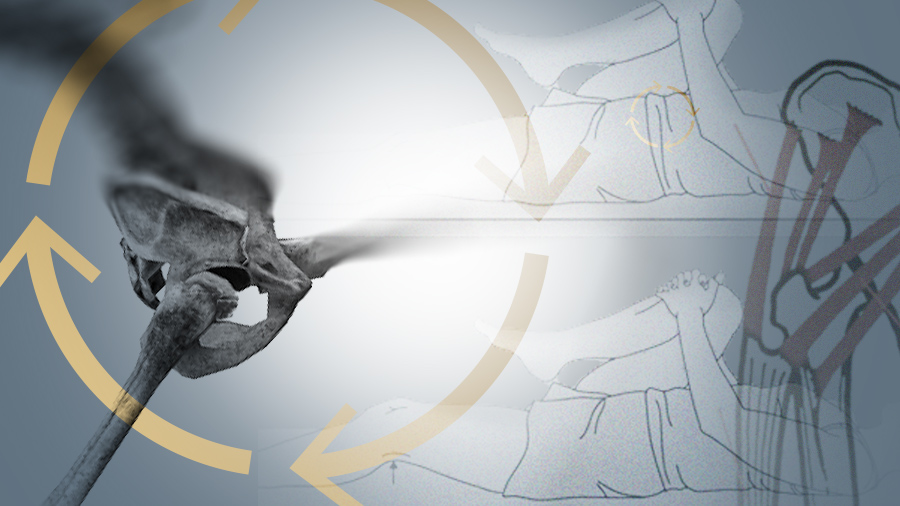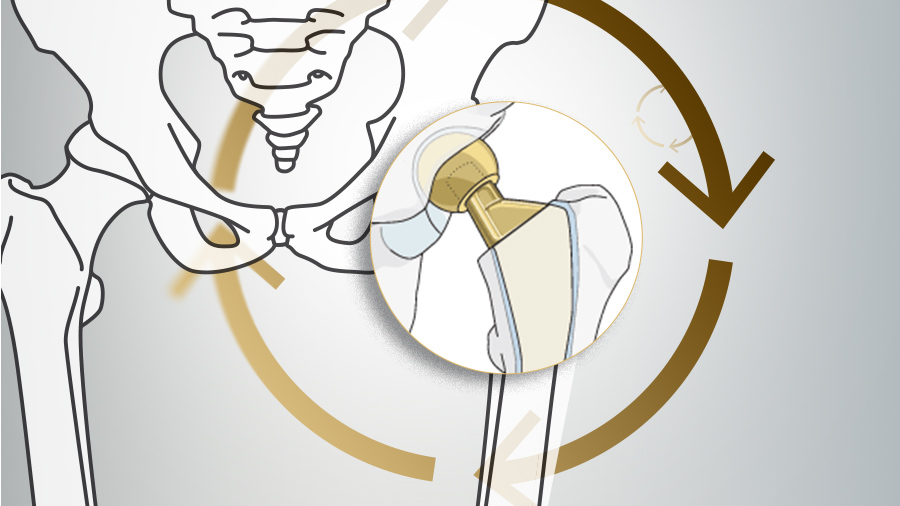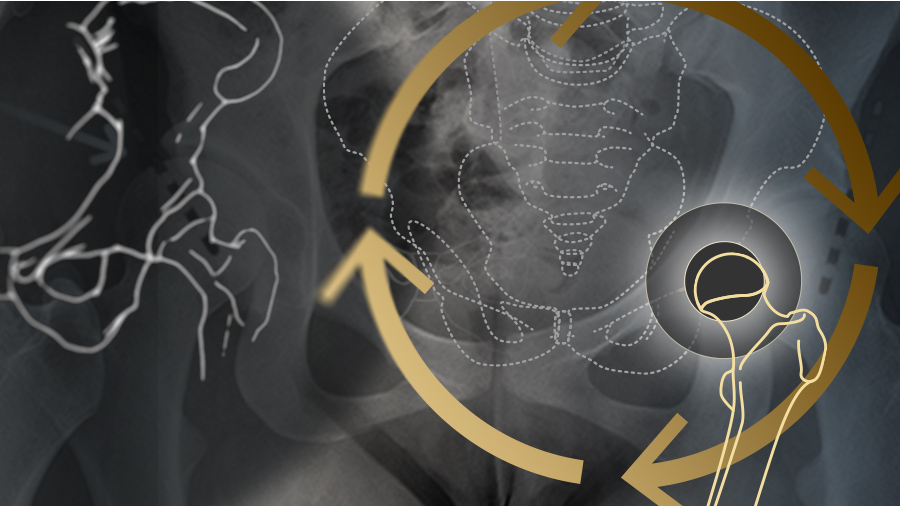Prevention of limb-length discrepancy during THA
"An ounce of prevention is worth a pound of cure..." It may be a centuries old saying but in the case of limb-length discrepancy (LLD) after total hip arthroplasty (THA), it still holds true. This common complication of THA can cause pain, discomfort, and result in dissatisfied patients. (Incidentally, it is the leading cause of litigation against US orthopedic surgeons). Here, we examine a multifaceted approach to preventing LLD.
THA and associated revision surgeries are being performed at increasing rates around the world. A 2014 study of Organisation for Economic Co-operation and Development (OECD) countries looked at THA data between 1990 and 2011 and found that the number of procedures performed annually was increasing seven times faster in the under 64 age group compared to older patients [1]. The researchers also pointed out that there is a strong correlation between a country’s gross domestic product (GDP) and health care spending on the rate of THA. Exponential growth is projected for this procedure.
Limb-length discrepancy
Limb-length discrepancy (LLD) is a common complication of THA that can lead to patient dissatisfaction and negatively impact outcomes. It is also the most common cause of litigation against the US orthopedic community and the fourth most common in the UK [2].
Lower your risk of litigation by [3]:
- Documenting everything
- Being transparent with patients
- Showing empathy
- Not being tempted by shortcuts
- Maintaining open communication and good relationships with patients and their families
Seegert L. 5 strategies to reduce medical malpractice lawsuit threats [3]. Available at: http://medicaleconomics.modernmedicine.com/medical-economics/news/5-strategies-reduce-malpractice-lawsuit-threats
The prevalence of LLD after THA varies greatly and has been reported to be as high as 45 to 50 percent [4, 5]. Most frequently the limb undergoing THA is lengthened [6, 7]. It is generally accepted that an LLD of less than 10 mm is tolerated by patients and this has been suggested as a maximum inequality goal for surgeons performing THA [8]. Interestingly, a 2005 literature review reported that 90 percent of the general population has unequal leg length, with the right leg most often being shorter by, on average, 5.2 mm [9]. Preexisting leg length inequality has been associated with a number of problems, for example, multiple stress fractures in athletes [10], progressive knee osteoarthritis [11], and hip and lumbar degenerative joint disease [12].
Orthopedic surgeon Jurek Pietrzak, based at University College London Hospital, comments that “patients with lifelong leg-length inequality are generally symptom free because of learned adaptive measures, which have evolved naturally.”
Read the full article with your AO login
- Impact of LLD after THA
- Preoperative tips for LLD prevention
- Medical history
- Clinical examination
- Radiographic measurements
- Preoperative templating
- Managing patient expectations
- Tips for intraoperative prevention of LLD:
- Implant positioning
- Soft-tissue considerations
- Intraoperative leg-length assessment
- Conclusion
- References
Additional AO resources
Access videos, tools, and other assets to learn more about this topic.
- Upcoming events: AO Recon Course finder
Contributing experts
This series of articles was created with the support of the following specialists (in alphabetical order):

Biju Benjamin
University College London Hospital
London, United Kingdom

Babar Kayani
University College London Hospital
London, United Kingdom

Jurek Pietrzak
University College London Hospital
London, United Kingdom
This issue was created by Word+Vision Media Productions, Switzerland
References
- Pabinger C, Giessler A. Utilization rates of hip arthroplasty in OECD countries. Osteoarthritis Cartilage. 2014 Jun;22(6):734–741.
- Desai AS, Dramis A, Board TN. Leg length discrepancy after total hip arthroplasty: a review of literature. Curr Rev Musculoskelet Med. 2013 Dec;6(4): 336–341.
- Seegert L. 5 strategies to reduce medical malpractice lawsuit threats. Medical Economics. November 10, 2016. Available at: http://medicaleconomics.modernmedicine.com/medical-economics/news/5-strategies-reduce-malpractice-lawsuit-threats. Accessed June 15, 2017.
- Ranawat CS, Rao RR, Rodriguez JA, et al. Correction of limb-length inequality during total hip arthroplasty. J Arthroplasty. 2001 Sep;16(6):715–720.
- García-Juárez JD, Bravo-Bernabé PA, García-Hernández A, et al. [Incidence and effect of leg length discrepancy after total hip arthroplasty]. Acta Ortop Mex. 2013 Jan-Feb;27(1):43–46. Spanish.
- Flecher X, Ollivier M, Argenson JN. Lower limb length and offset in total hip arthroplasty. Traumatol Surg Res. 2016 Feb;102(1 Suppl):S9-20.
- McWilliams AB, Grainger AJ, O'Connor PJ, et al. A review of symptomatic leg length inequality following total hip arthroplasty. Hip Int. 2013 Jan-Feb;23(1):6–14.
- O'Brien S, Kernohan G, Fitzpatrick C, et al. Perception of imposed leg length inequality in normal subjects. Hip Int. 2010 Oct-Dec;20(4):505–511.
- Knutson GA. Anatomic and functional leg-length inequality: A review and recommendation for clinical decision-making. Part I, anatomic leg-length inequality: prevalence, magnitude, effects and clinical significance. Chiropr Osteopat. 2005; 13: 11. Published online 2005 Jul 20.
- Korpelainen R, Orava S, Karpakka J, et al. Risk factors for recurrent stress fractures in athletes. Am J Sports Med. 2001 May-Jun;29(3):304–310.
- Harvey WF, Yang M, Cooke TD, et al. Association of leg-length inequality with knee osteoarthritis: a cohort study. Ann Intern Med. 2010 Mar 2;152(5):287–295.
- Murray KJ, Molyneux T, Le Grande MR, et al. Association of mild leg length discrepancy and degenerative changes in the hip joint and lumbar spine. J Manipulative Physiol Ther. 2017 Apr 17. doi: 10.1016/j.jmpt.2017.03.001.
- Parvizi J, Sharkey PF, Bissett GA, et al. Surgical treatment of limb-length discrepancy following total hip arthroplasty. J Bone Joint Surg Am. 2003 Dec;85-A(12):2310–2317.
- Woolson ST, Hartford JM, Sawyer A. Results of a method of leg-length equalization for patients undergoing primary total hip replacement. J Arthroplasty. 1999 Feb;14(2):159–164.
- Ng VY, Kean JR, Glassman AH. Limb-length discrepancy after hip arthroplasty. J Bone Joint Surg Am. 2013 Aug 7;95(15):1426–1436.
- Kayani B. Prevention of Limb-Length Discrepancy in Total Hip Arthoplasty.
- Clark CR, Huddleston HD, Schoch EP, et al. Leg-length discrepancy after total hip arthroplasty. J Am Acad Orthop Surg. 2006 Jan;14(1):38–45.
- Meermans G, Malik A, Johan Witt, et al. Preoperative radiographic assessment of limb-length discrepancy in total hip arthroplasty. Clin Orthop Relat Res. 2011 Jun; 469(6): 1677–1682.
- Karadsheh M, Incavo S. THA Templating. OrthoBullets. Available at: http://www.orthobullets.com/recon/12124/tha-templating. Accessed June 16, 2017.
- Wang Q, Xiao J, Zhu L, et al. Acetate templating on calibrated standing digital radiograph improves accuracy of preoperative templating for total hip arthroplasty. Orthop Traumatol Surg Res. 2017 May;103(3):341–347.
- Hutson MM, Blaha JD. Patients' recall of preoperative instruction for informed consent for an operation. J Bone Joint Surg Am. 1991 Feb;73(2):160–162.
- Illgen RL Nd, Bukowski BR1, Abiola R, et al. Robotic-assisted total hip arthroplasty: Outcomes at minimum two-year follow-up. Surg Technol Int. 2017 May 24;30. pii: sti30/836. [Epub ahead of print].
- Goldstein WM, Gordon A, Branson JJ. Leg length inequality in total hip arthroplasty. Orthopedics. 2005 Sep;28(9 Suppl):s1037–1040.
- Mehra A, Moriso ZN, Schemitsch E, et al. Assessing leg lengths intraoperatively in total hip arthroplasty: comparison of two methods. Surg Technol Int. 2013 Sep;23:258–260.
- Kurtz WB. In situ leg length measurement technique in hip arthroplasty. J Arthroplasty. 2012;27(1):66–73.
- Sarin VK, Pratt WR, Bradley GW. Accurate femur repositioning is critical during intraoperative total hip arthroplasty length and offset assessment. J Arthroplasty. 2005 Oct;20(7):887–891.
- Rice IS, Stowell RL, Viswanath PC, et al. Three Intraoperative Methods to Determine Limb-length Discrepancy in THA. Orthopedics. Orthopedics. 2014 May;37(5):e488–495.




